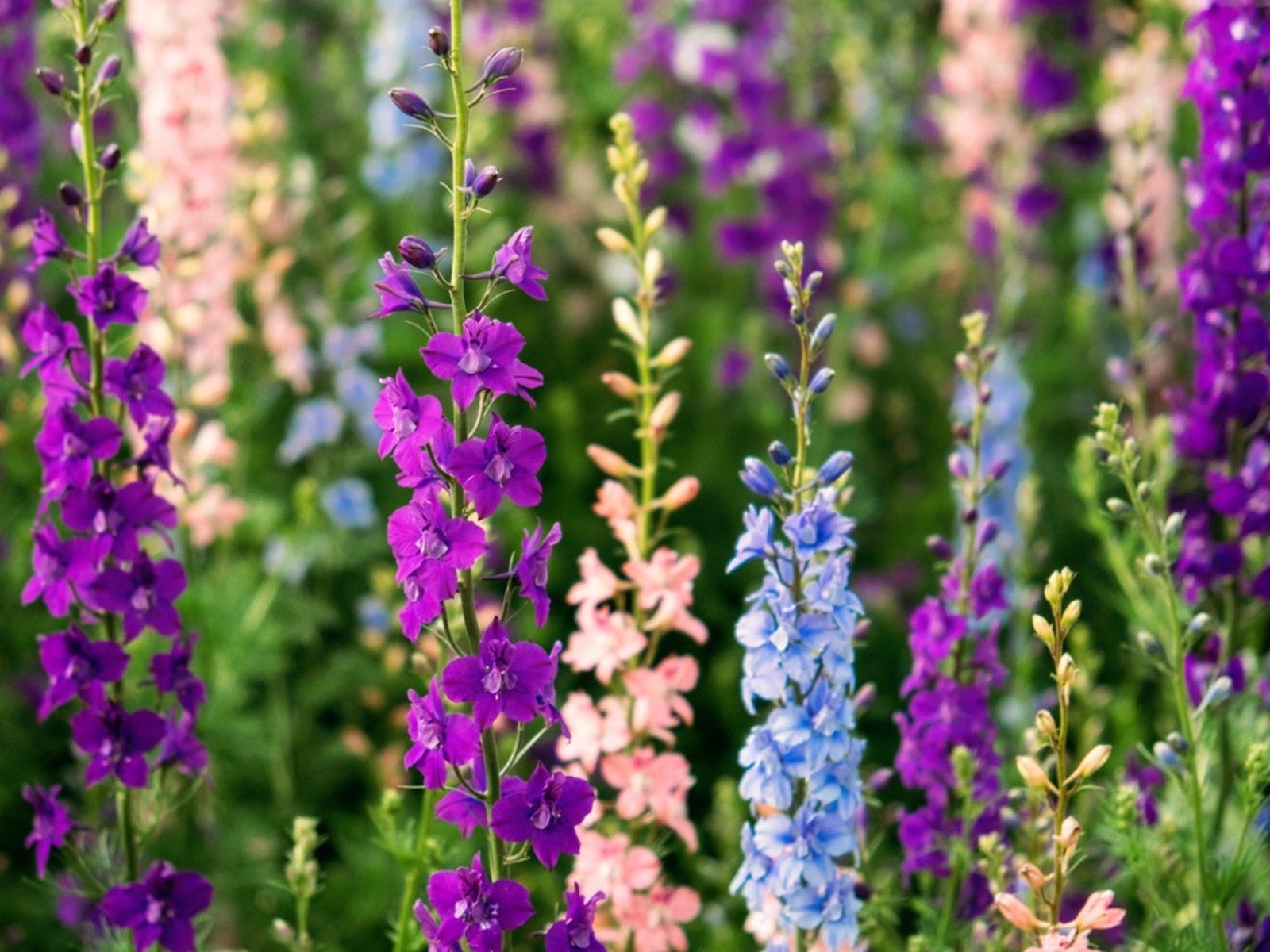Common Annual Delphinium Problems


Larkspur is a pretty blue, purple, pink, and white flower and the designated bloom for July birthdays. Also known as delphinium, pests and diseases of larkspur can ruin your flower bed and chance at cutting flowers for arrangements. These are some of the most common delphinium problems, how to identify them, and the fix.
Delphinium Pests
Larkspur is susceptible to damage and infestation by several types of pests:
- Aphids. These little insects feed on larkspur and reduce their growth. Aphids are easy to identify by the honeydew they leave on the flowers and foliage. Often, fungus grows on the honeydew. You can use certain species of midges to biologically control aphids or use neem or an insecticidal soap.
- Cyclamen mites. Mites feed on delphinium, resulting in distorted and stunted growth of buds and flowers. They thrive in the humidity around buds deep in the plant. Look for the characteristic damage to identify mites, which are less than half a millimeter in size. Because they get so deep into plants, you need a finely misted chemical spray to get to them.
- Slugs and snails. These larger species can do significant damage to larkspur plants. It helps to change the environment around plants, so they don’t have shelter. Clean up the area, removing rocks, lawn debris, boards, logs, and weeds. You can also handpick them after dark, use traps with beer, and create barriers around plants.
Diseases of Delphiniums
Other problems with delphiniums are the many diseases that can affect them:
- Bacterial leaf spot. To identify this disease, look for black spots on leaves. They don’t rub off and grow larger over time, eventually merging with each other. It occurs and spreads most rapidly in wet conditions. Prevent leaf spot by watering the soil and trying to keep leaves dry and with enough space for airflow. Remove any diseased leaves as soon as you see them. There is no reliable chemical control for this disease in larkspur.
- Botrytis blight. This is a fungal infection that attacks flowers in particular. Look for a gray mold to identify it. Chemical control of botrytis is difficult because the fungus has evolved resistance to many substances. Keep plants dry and allow airflow to prevent the infection.
- Powdery mildew. Powdery mildew is another fungal disease that causes white spots on leaves, stems, and flower buds. You’ll also see disfigured and twisted leaves and flowers or buds that don’t open. You can manage powdery mildew with an appropriate fungicide.
- Seedling rot. Check larkspur seedlings regularly for signs of infection by Pythium water molds. They cause water-soaked and tan-colored spots on the roots and stems. Prevent rot with well-draining soil and good airflow, using a fungicide as needed.
Delphinium can be a tricky ornamental to grow. If you know how to prevent and identify problems early, you’ll be rewarded with beautiful flowers.
Sign up for the Gardening Know How newsletter today and receive a free copy of our e-book "How to Grow Delicious Tomatoes".

Mary Ellen Ellis has been gardening for over 20 years. With degrees in Chemistry and Biology, Mary Ellen's specialties are flowers, native plants, and herbs.